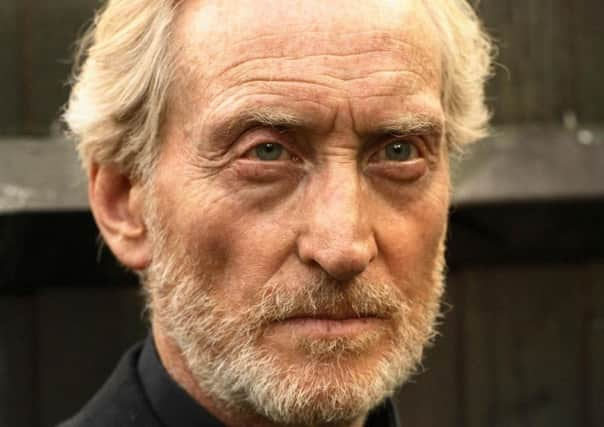Roger Cox: How Charles Dance ended up in a surf film


Eighteen months ago, the award-winning British filmmaker Chris McClean brought out a surfing short called Edges of Sanity, under the aegis of UK surf brand Finisterre. The film was remarkable for all kinds of reasons, not least the stylish, committed surfing of Noah Lane and Matt Smith in shallow, slabby waves, and the potent combination of McClean’s moody cinematography and the brooding CJ Mirra soundtrack, which conspired to make the north of Scotland look and feel like the end of the earth. What really made Edges of Sanity stand out from the thousands of other surf flicks doing the rounds online, however, was the poem intoned over the action, written by Dan Crockett.
The spoken word rarely features in surf films, and when it does it’s usually the kind of jaunty, slightly tongue-in-cheek narration for which Bruce Brown established the template in the 1960s with films like The Endless Summer; to describe a surf flick/poetry combo as something of a novelty, then, is to understate the case. And what about the voice of the guy reading the poem? Gravelly, full of foreboding and also strangely familiar. Sounds a bit like Charles Dance, in fact. Hang on a minute, it is Charles Dance.
Advertisement
Hide AdAdvertisement
Hide Ad“He’s not a surfer unfortunately,” chuckles McClean, “we tried to pay him in surf lessons but he wasn’t having any of it.”
“Finisterre’s marketing director at the time [Ernie Capbert] said to me ‘who do you want to read the poem?’” McClean continues, “so I went away and thought about it and happened to come across a recording of Charles Dance reading something. I said ‘this would be perfect’ – kind of jokingly. But then Ernie asked around, found his agent, emailed him and said ‘look, we’ve not got very much money but we’ve got a cool project, would you like to be involved?’ And he said yes.”
“A few weeks later we were in the studio with him, which was quite surreal. From the very first take he did, the hairs on everyone’s necks just stood up.”
On Friday, McClean will visit An Lanntair on Stornoway to present Chasing Zero – a 40-minute “greatest hits” screening of his short surf films, with a live soundtrack performed by regular contributor Mirra. Some of McClean’s films feature footage of surfing on Lewis, and there will also be surf films by locals including Mark Lumsden, Colin Macleod and Jim Hope, in what’s being billed as a night “celebrating the surf culture of the Outer Hebrides”.
McClean hails from Cleethorpes in Yorkshire and grew up surfing around Scarborough, but his dark, moody take on surf cinematography is equally well-suited to capturing waveriding in austere, windswept Scottish settings.
“Surfing on the east coast isn’t beautiful,” he says, “it is dark and it does rain and, y’know, it’s quite a bleak landscape in a lot of ways. It’s just my take on surfing, I guess.”
There’s something stylishly understated, too, about the way McClean presents the act of surfing. Surf films typically make a big deal of any star surfers they feature, but even when McClean’s films show mind-blowing moves from global surf stars like Hawaii’s John John Florence, you don’t find out about their involvement until the end credits. Aesthetics take precedence over reputation.
Advertisement
Hide AdAdvertisement
Hide AdUnsurprisingly perhaps, McClean cites the groundbreaking 1996 surf film Litmus as a key influence. At a time when the mainstream surf media was still predominantly interested in world tour surfers cutting loose in tropical locations, Andrew Kidman’s film made a point of profiling idiosyncratic elder statesmen like Tom Curren, Derek Hynd and Wayne Lynch. It wasn’t afraid of the dark, either, frequently slipping into monochrome, or indeed the cold, showing Joel Fitzgerald surfing frigid, gurgling barrels in Ireland. The other key thing about Litmus was that it was the result of a multi-disciplinary collaboration, featuring a soundtrack by the Val Dusty Experiment – a musical collective in which Kidman played a part – and animation by Mark Sutherland. It’s a way of working McClean appreciates: “Of course you can make a film on your own, but if you can’t do everything you can assemble a really cool crew, and if you’ve got people like CJ and Dan you end up with a higher quality end product. From the very first film, that was always really exciting for me.”
• Chasing Zero is at An Lanntair, Stornoway, on 20 May, www.lanntair.com. For Chasing Zero tour dates, visit www.colour8.org/chasingzero